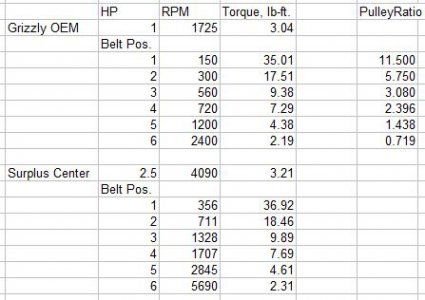Thank you RJSakowsk for looking at it and letting us know.
I also saw that note not to exceed 110v which would be a concern but was wondering how realistic that is considering that would not make it very usable on any public electrical system supplying 110-120v? I also see no adjustable pots for slow start, torque and for anything else?
In regards to 90V, don't most treadmill motor companies boost the spec numbers (voltage & rpm) in order to advertise higher HP but realistically the motors work in constant in 90V and lower?
Also, wouldn't a DC treadmill motor deliver high torque at lower speed speeds with a PWM DC controller that has a constant torque operation feature on it giving it the rated torque at the rated armature current independent of speed allowing a constant torque capacity regardless of speed?
With that you wouldn't be losing a lot of power/derating it? I'm asking this because I wouldn't think any of us (hobby-machinist) would use a treadmill motor at full speed at its high rpms (4500....etc) unless you're trying to use it for a sensitive drill press or similar but a treadmill motor is way overkill for that? I'm at the reality that I would never see an actual 2+ horsepower out of a treadmill motor and just hoping for around 3/4-1hp with torque in a typical hobby machinist scenario?
Sorry for all the questions, I wish I was able to add more value to this thread but I'm still learning and very much appreciate to ones who have been answering questions and giving out good info. I do think if finding a cheap solution to Inferno's orig post will be very beneficial to many of us here on Hobby-Machinist and hopefully for Inferno.
If we can find a cheap, quick & viable solution to using a treadmill motors in our shops would be very useful. Cheers


